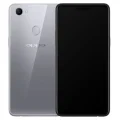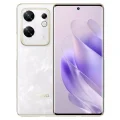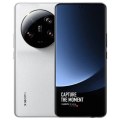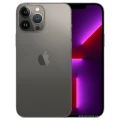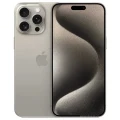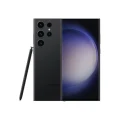- Awesome page
- Latest Mobile
- Smartphones
- OnePlus 9R
OnePlus 9R
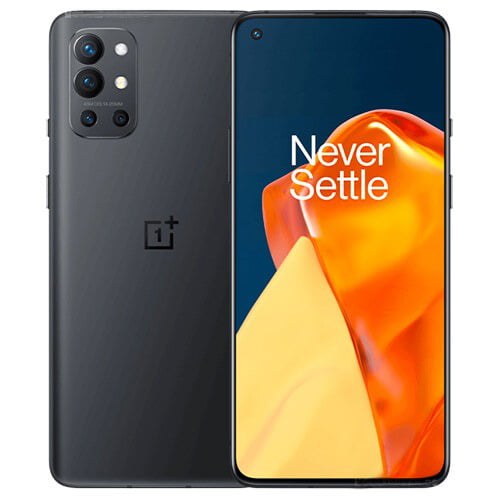


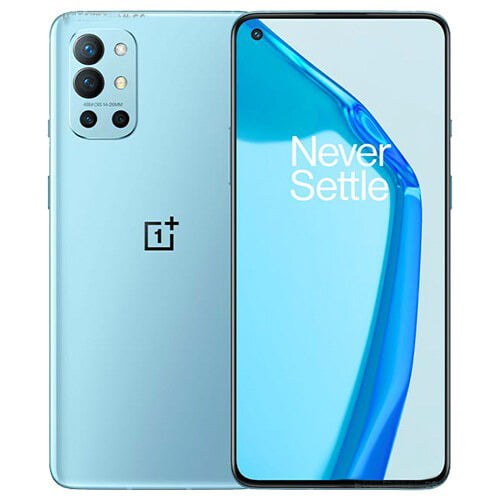
OnePlus 9R Price in Bangladesh
The OnePlus 9R Price in Bangladesh is BDT 37,000, making it an excellent choice for those seeking high performance at a competitive price. This phone features a stunning 6.55-inch Fluid AMOLED display, powered by the Snapdragon 870 chipset, and boasts a 48MP quad camera setup. The OnePlus 9R offers exceptional value for money with its premium features and reliable performance. If you’re looking for the latest OnePlus 9R Price in Bangladesh, this model is a top contender in its price range.
Specifications
General
| Model | OnePlus 9R |
| Announced | 2021, March 23 |
| Released | 2021, April 14 |
| Status | Available |
| Unofficial price | 8GB 128GB ৳37,000 / 8GB 256GB ৳40,000 / 12GB 256GB ৳41,500 |
Design
| Dimensions | 161 x 74.1 x 8.4 mm (6.34 x 2.92 x 0.33 in) |
| Weight | 189 g (6.67 oz) |
| Colors |
Carbon Black, Lake Blue |
Network
| Technology | GSM / CDMA / HSPA / LTE / 5G |
| 2G Network |
GSM 850 / 900 / 1800 / 1900 - SIM 1 & SIM 2 CDMA 800 / 1900 & TD-SCDMA |
| 3G Network |
HSDPA 800 / 850 / 900 / 1700(AWS) / 1800 / 1900 / 2100 |
| 4G Network |
LTE |
| 5G Network |
SA/NSA |
| GPRS <strong>GPRS</strong> (General Packet Radio Service) is a packet oriented mobile data service on the 2G and 3G cellular communication system's global system for mobile communications (GSM), Generally, GPRS is used for the purpose of wireless data transfer, such as sharing pictures and videos or browsing the Internet via a mobile phone connection. | |
| EDGE <strong>EDGE</strong> (Enhanced Data GSM Environment) is a wireless network technology generally considered the next step in the 2G network offers data transfer rates up to four times faster than ordinary GSM networks, Generally, EDGE is used for the purpose of wireless data transfer, such as sharing pictures and videos or browsing the Internet via a mobile phone connection. | |
| Speed | HSPA 42.2/5.76 Mbps, LTE-A (5CA) Cat18 1200/150 Mbps, 5G 7.5 Gbps DL |
Display
| Display Type <strong>Display Technology => </strong> A number of display technologies and types used in mobile phones => TFT (Thin Film Transistor), IPS (In-Place Switching), OLED (Organic Light Emitting Diode), AMOLED (Active-Matrix Organic Light-Emitting Diode), Super AMOLED (an even advanced version of AMOLED), Resistive Touchscreen (Resistive touchscreens contain two layer of conductive material with a very small gap between them which acts as a resistance), Capacitive Touchsceen (Capacitive touchscreen technology consists of a layer of glass coated with a transparent conductor) | Fluid AMOLED capacitive touchscreen, 16M colors |
| Size | 6.55 inches, 103.6 cm2 (~86.8% screen-to-body ratio) |
| Resolution | 1080 x 2400 pixels, 20:9 ratio (~402 ppi density) |
| Features |
Corning Gorilla Glass 5 120Hz, HDR10+ Always-on display |
Camera
Main camera
| Camera Setup | Quad |
| Primary <strong>Camera</strong> is able to capture photographs and usually videos, The most important characteristics of a camera are the resolution (measured in megapixels), lens focus type (fixed or automatic), higher megapixel cameras are known to capture higher quality photos, but not always a good measurement of the photos quality. |
48 MP, f/1.7, 26mm (wide), 1/2.0&quot;, 0.8µm, PDAF, OIS 16 MP, f/2.2, 14mm, 123˚ (ultrawide), 1/3.6&quot;, 1.0µm 5 MP, f/2.4, (macro) 2 MP, f/2.4, (depth) |
| Features |
LED flash, HDR, panorama |
| Video | 4K@30fps, 1080p@30/60/120fps; gyro-EIS |
Selfie camera
| Camera Setup | Single |
| Primary <strong>Camera</strong> is able to capture photographs and usually videos, The most important characteristics of a camera are the resolution (measured in megapixels), lens focus type (fixed or automatic), higher megapixel cameras are known to capture higher quality photos, but not always a good measurement of the photos quality. |
16 MP, f/2.4, (wide), 1/3.06&quot;, 1.0µm |
| Features |
HDR |
| Video | 1080p@30/60fps, gyro-EIS |
Hardware
| Chipset <strong>Chipset</strong> is a group of integrated circuits designed to perform one or a more dedicated functions, often with real time computing constraints, Popular smartphones are equipped with more advanced embedded chipsets that can do many different tasks depending on their programming. | Qualcomm SM8250-AC Snapdragon 870 5G (7 nm) |
| CPU <strong>CPU</strong> (Central Processing Unit) mostly known as processors, CPU processes instructions in order to carry out certain functions that make your device operate properly. Processors are often described as the brain of computers, smartphones and tablets, Smartphones and tablets rely on processors to carry out their every task, Processors are an incredibly important factor in selecting any type of computing device, including your smartphone. | Octa-core (1x3.2 GHz Kryo 585 & 3x2.42 GHz Kryo 585 & 4x1.80 GHz Kryo 585) |
| GPU <strong>GPU</strong> (Graphics Processing Unit) is a single-chip processor designed to rapidly manipulate and alter memory to accelerate the creation of images in a frame buffer intended for output to a display, This includes things such as lighting effects, object transformations, and 3D motion. | Adreno 650 |
| RAM (Memory) <strong>RAM</strong> (Random Access Memory) is a type of computer memory that can be accessed randomly, any byte of memory can be accessed without touching the preceding bytes that allows information to be stored and accessed quickly from random locations. RAM is the most common type of memory found in computer systems, smartphones, tablets and other electronic devices. | 8/12 GB |
| Internal Storage <strong>Internal Storage</strong> is a data storage space (flash memory) mostly used in smartphones, tablets and other electronic devices where operating system, apps, music, photos, videos, files and other user data Is stored. | 128/256 GB UFS 3.1 |
| Sensors <strong>Sensors</strong> are electronic components that detects and responds to some type of input from the physical environment. The specific input could be light, heat, motion, moisture, pressure and location, The output is generally a signal that is converted to use in computing systems, a location sensor, such as a GPS receiver is able to detect current location of your electronic device. |
Fingerprint (under display, optical), accelerometer, gyro, proximity, compass |
Connectivity
| Bluetooth <strong>Bluetooth</strong> is a wireless communications technology for exchanging data between mobile phones, headsets, computers and other network devices over short distances without wires, Bluetooth technology was primarily designed to support simple wireless networking of personal consumer devices. | 5.1, A2DP, LE, aptX HD |
| Infrared <strong>Infrared</strong> connectivity is an old wireless technology used to connect two electronic devices. It uses a beam of infrared light to transmit information and so requires direct line of sight and operates only at close range. | |
| USB | USB Type-C 2.0, USB On-The-Go |
| GPS <strong>GPS</strong> The Global Positioning System is a satellite-based radio navigation system, GPS permits users to determine their position, velocity and the time 24 hours a day, in all weather, anywhere in the world, In order to locate your position, your device or GPS receiver must have a clear view of the sky. | Yes, with dual-band A-GPS, GLONASS, BDS, GALILEO, SBAS |
| NFC <strong>NFC</strong> (Near field communication) is a set of standards for smartphones and similar devices to establish peer-to-peer radio communications with each other by touching them together or bringing them into proximity, usually no more than a few inches. |
Battery
| Battery Type <strong>Battery Type => </strong> Cell phones run on various kinds of batteries depending on the manufacturer, phone size or shape and features. There are basically four types of cell phone batteries => Lithium Polymer, Lithium Ion, Nickel Metal Hydride and Nickel Cadmium. | Non-Removable Li-Po |
| Capacity <strong>Battery Capacity</strong> is a measure (typically in Amp-hr) of the charge stored by the battery, and is determined by the mass of active material contained in the battery. The battery capacity represents the maximum amount of energy that can be extracted from the battery under certain conditions. | 4500 mAh |
| Charging Charging | Fast charging 65W, 1-100% in 39 min (advertised) |
OnePlus 9R Review Unveiled: A Comprehensive Guide for Tech Enthusiasts
Are you in the market for a new smartphone? The OnePlus 9R might be just what you’re looking for. With its cutting-edge features and competitive pricing, this device has captured the attention of tech enthusiasts, gadget lovers, and smartphone users alike. In this blog post, we’ll provide an in-depth review of the OnePlus 9R, covering everything from its design and build quality to its performance, camera system, and more. By the end of this post, you’ll have a clear understanding of what the OnePlus 9R offers and whether it’s the right choice for you.
Introduction to the OnePlus 9R
The OnePlus 9R is the latest addition to the OnePlus lineup, strategically positioned as a high-quality yet affordable option in the competitive smartphone market. Launched as a part of the OnePlus 9 series, it aims to offer a balanced mix of performance, design, and features without breaking the bank. But how does it stack up against its competitors and other models in the OnePlus family?
The OnePlus 9R is designed to appeal to tech-savvy individuals who demand performance and functionality. It offers impressive specifications that cater to gaming enthusiasts, photographers, and everyday users. Let’s take a closer look at what makes this phone stand out.
Design and Build Quality
When it comes to design and build quality, the OnePlus 9R does not disappoint. The phone features a sleek and modern design, with a premium feel that belies its price point. It is constructed using high-quality materials, including an aluminum frame and Gorilla Glass on both the front and back.
The ergonomics of the phone are also commendable. It has a comfortable grip and is easy to use with one hand. The placement of buttons and ports is intuitive, making it user-friendly. The OnePlus 9R is available in several stunning colors, including Carbon Black, Lake Blue, and Winter Mist, giving users plenty of options to choose from.
Overall, the OnePlus 9R combines aesthetics and functionality beautifully, making it a pleasure to hold and use. But design isn’t the only thing that matters—what about the display and audio experience?
Display and Audio
The OnePlus 9R boasts a 6.55-inch Fluid AMOLED display with a resolution of 2400 x 1080 pixels. This results in a crisp and vibrant display that offers excellent color accuracy and deep blacks. The 120Hz refresh rate ensures smooth scrolling and a responsive touch experience, which is particularly beneficial for gaming and multimedia consumption.
In terms of audio, the OnePlus 9R features stereo speakers that deliver clear and immersive sound. Whether you’re watching videos, playing games, or listening to music, the audio quality is top-notch. The phone also supports Dolby Atmos, enhancing the sound experience further.
The combination of a high-quality display and impressive audio capabilities makes the OnePlus 9R an excellent choice for media enthusiasts. But what about its performance, especially for gaming?
Performance and Gaming
Under the hood, the OnePlus 9R is powered by the Qualcomm Snapdragon 870 processor, coupled with up to 12GB of RAM. This powerful combination ensures that the phone can handle demanding tasks with ease, including gaming, multitasking, and running resource-intensive applications.
For gaming enthusiasts, the OnePlus 9R offers an exceptional experience. The phone is equipped with an Adreno 650 GPU, which delivers smooth graphics and high frame rates. The 120Hz refresh rate further enhances the gaming experience, making every movement and action feel fluid and responsive.
To keep the phone cool during extended gaming sessions, the OnePlus 9R features a multi-layer cooling system. This ensures that the device does not overheat, maintaining optimal performance throughout. In summary, the OnePlus 9R is a powerhouse when it comes to performance and gaming, but how does it fare in the camera department?
Camera System
The OnePlus 9R is equipped with a versatile quad-camera setup, featuring a 48MP main sensor, a 16MP ultra-wide-angle lens, a 5MP macro lens, and a 2MP monochrome sensor. This setup allows users to capture stunning photos in various scenarios, from wide landscapes to detailed close-ups.
The main sensor delivers sharp and vibrant images, with excellent color reproduction and dynamic range. The ultra-wide-angle lens is perfect for capturing expansive scenes, while the macro lens allows for detailed close-up shots. The monochrome sensor adds depth and texture to black-and-white photos.
In addition to the hardware, the OnePlus 9R’s camera software offers a range of features, including Nightscape mode for low-light photography, Pro mode for manual control, and various filters and effects. The phone also supports 4K video recording at 60fps, ensuring high-quality video capture.
Overall, the OnePlus 9R’s camera system is versatile and capable, making it a great choice for photography enthusiasts. But how does it perform in terms of battery life and charging?
Battery Life and Charging
The OnePlus 9R is equipped with a 4500mAh battery, which provides ample power to get through a full day of usage. Whether you’re browsing the web, streaming videos, or playing games, the phone’s battery life is impressive.
One of the standout features of the OnePlus 9R is its fast charging capabilities. The phone supports Warp Charge 65, which can charge the battery from 0% to 100% in just 39 minutes. This is incredibly convenient for users who are always on the go and need a quick top-up.
In addition to fast charging, the OnePlus 9R also supports USB Power Delivery, allowing for flexible charging options. Overall, the battery performance and charging capabilities of the OnePlus 9R are top-notch, ensuring that you stay powered throughout the day.
Software and User Interface
The OnePlus 9R runs on OxygenOS, which is based on Android 11. OxygenOS is known for its clean and intuitive user interface, offering a near-stock Android experience with added customization options.
Users can personalize their devices with various themes, wallpapers, and icon packs. The software also includes useful features such as Zen Mode, which helps users take a break from their phones, and Reading Mode, which optimizes the display for reading.
The overall user experience is smooth and responsive, thanks to the optimization of OxygenOS. Regular software updates ensure that the phone stays up-to-date with the latest features and security patches. The software experience on the OnePlus 9R is user-friendly and customizable, making it a joy to use.
Price-Performance Ratio
One of the key selling points of the OnePlus 9R is its excellent price-performance ratio. The phone offers a premium experience at a more affordable price compared to flagship models. With its powerful performance, high-quality display, versatile camera system, and fast charging capabilities, the OnePlus 9R delivers exceptional value for money.
When compared to its competitors, the OnePlus 9R holds its own and often outperforms devices in the same price range. This makes it an attractive option for users who want a high-quality smartphone without breaking the bank.
In conclusion, the OnePlus 9R offers a compelling package of features, performance, and value. But is it the right choice for you?
Conclusion
The OnePlus 9R is a well-rounded smartphone that caters to the needs of tech enthusiasts, gadget lovers, and everyday users alike. With its sleek design, powerful performance, versatile camera system, and excellent battery life, it offers a premium experience at an affordable price.
If you’re in the market for a new smartphone that delivers on all fronts, the OnePlus 9R is definitely worth considering. Its combination of features and value makes it a standout choice in the competitive smartphone market.
Ready to take the plunge? Explore more about the OnePlus 9R and see if it’s the perfect fit for you. Happy exploring!
































































































